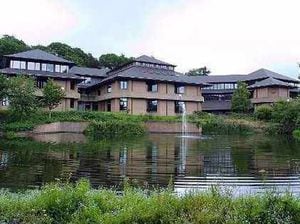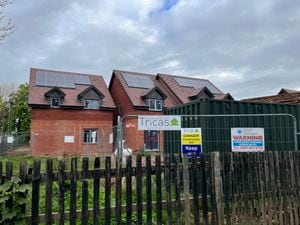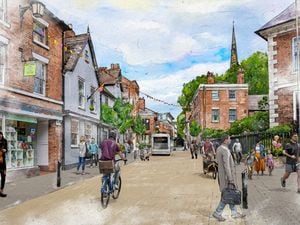Council chamber cleared as resident shouts from gallery
Councillors left a council chamber for a time as a protester against giving a chicken farm planning permission, refused to be kept quiet.

Just before members of the Powys County Council planning committee were about to vote, Lucy Thomas stood up from the back of the chamber.
She started telling councillors that people had fallen ill due to her belief that the water supply had been contaminated by manure spreading.
Standing in for planning committee chairman, Councillor Karl Lewis, vice-chairman Councillor E Michael Jones asked her to stop several times, to which she replied that she would have to be “hauled out before she would”.
Councillor Jones ordered a five-minute recess while planning development manager, Peter Morris and planning committee solicitor Colin Edwards went to speak to Ms Thomas about her concerns.
After re-entering the chamber councillors voted the application through unanimously.
Back at a planning meeting on July 5, Ms Thomas had spoken against the application for a 37,000 pullet (young hen) rearing unit at Old Impton Farm, Norton, near Presteigne, made by Richard Wilding.
She had spoken on behalf of the resident of Norton Manor Estate and had highlighted concerns about the water supply.
During the meeting on Thursday, principal planning officer Holly Hobbs had told councillors that a manure spreading buffer zone of 200 metres would apply around the water supply.
She said that this was “far in excess” of the 50 metres that is recommended.
Earlier in the day, councillors from the committee had been to Old Impton on a site visit.
After seeing the lie of the land, the only questions that councillors asked were on a patch of conifer trees that were supposed to be chopped down as part of the scheme.
Wildlife
Councillor David Price said: “Having seen the site earlier this morning, I think it’s one of the most well screened proposed poultry units that we have had.
“Having seen the line of conifers, it does seem to be rather heavy handed to remove what is a wildlife habitat corridor, and I don’t feel we’re achieving anything by its removal.
“They are reaching the end of their useful life and will need to be thinned as part of good farming practice.
“Is there an actual need to remove them?”
The council's built heritage conservation officer Debra Lewis told the committee that it drew the eye away from the “wonderful natural landscape,” and the Grade II* listed building and Grade II barns.
Councillor Phil Pritchard proposed that the committee approve the application and his motion was seconded by Councillor Elwyn Vaughan.
They were asked if they would be happy to keep the conifer patch.
Councillor Pritchard said he would rather not put it as a condition, but let the trees follow the “natural course of events”.
Allowing the conifers to stay brought up another question, as Debra Lewis had originally objected to the plans if the conifer trees remained.
Committee solicitor, Colin Edwards, asked: “If the trees are not felled is the original objection resurrected?
“Sorry to put you on the spot.”
Ms Lewis, said: “The trees are mature and approaching the end of their life, I would be happy if the trees eventually cease to be over the next couple of years and have no additional planting.”
Mr Wilding had told the meeting on July 5 that he needed to diversify into chicken farming to secure a future for his family to continue farming there.





